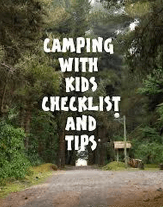- Home
- About
- Blog
- For Parents
-
Corners
- Allison’s Corner
- Amber’s Category
- Andrea’s Corner
- Ashley’s Corner
- Brandi Jo’s Corner
- Brittany’s Corner
- Brooke’s Corner
- Catrina’s Corner
- Conservation
- Desiree’s Corner
- Emily’s Corner
- Erica’s Corner
- Erin’s Corner
- Heather’s Corner
- Ivory’s Corner
- Jeana’s Corner
- Katie’s Corner
- Kelly’s Corner
- Kelsey’s Corner
- Kendra’s Corner
- Liberty’s Corner
- Lisa’s Corner
- Meagan’s Corner
- Melissa’s Corner
- Mimi’s Corner
- Morgan’s Corner
- Nicole’s Corner
- Sarah’s Corner
- Savannah’s Corner
- Shannon’s Blog
- Sharon’s Corner
- Sherri’s Corner
- Tara’s Corner
- Contact
- Guest Post

Tips for Camping with Kids
Camping with kids takes a lot of work, but it can be a pleasant experience. Safety is always the number one priority when camping, but when you bring children along, the significance of that credo increases exponentially. As you probably know, planning is the secret to successful camping. This requires thinking ahead. Be sure to have the appropriate clothing to protect your child, whether that means sun hats in the summer or warm, long-sleeved clothing they can wear if the outside temperature suddenly drops. Just like you would practice a fire drill, with your children to help them learn how to prevent getting lost and what to do if this should happen. Provide a flashlight or glow-stick to each child, and review the rules several times a day to remind children what to do to stay safe.
Some basic rules when it comes to camping include some of the following:
Be prepared- Always prepare for the unexpected. Before you leave, check the weather report, learn about security at your camp location, and tell family and friends your plans. Know what to do when toilets are not available. Be sure to bring along a supply kit that includes a first-aid kit, compass or GPS, map, flashlight, blankets, batteries, food, water, clothes, and medications. Know who to contact at the camp to report issues that may come up. When you return home, check for ticks, skin rashes or sunburn, dehydration, and other problem.
You’re the adult, and that naturally carries leadership responsibilities. Scout out trails, campsites and the weather before you head into the woods. This is especially important if your destination is a more primitive site. Ask your kids where they’d like to go – the answers might surprise and inspire you. It also gives them ownership of the experience, a key component in raising true outdoor enthusiasts.
–
Practice makes perfect- If you’re the type of person who needs confirmation, consider a trial run close to home. Pitch a tent in the backyard for your first overnight with kids, and let them help out setting up camp. Experiment with sleeping bags, mattress pads, even sleeping arrangements. This also gives parents the chance to make sure that everything, from stoves to headlamps, is in good working order.
–
Engage if feasible- The great outdoors is an unparalleled educational opportunity, but try to avoid the classroom feeling. Fire your child’s imagination with lessons about wildlife, the surrounding trees, ponds, streams or swamps, the change of seasons. Teach them map and compass skills. Don’t quiz them; just let them soak it up.
When nature calls- Some campsites have outhouses, but you’d be wise to inspect them before your kids do. On the trail, or at a primitive site, heeding nature’s call is an opportunity to show children how to be self-sufficient (always pack toilet paper!). Just like home, make sure they tend to business before bedtime.
–
Survival kit- Carrying a survival kit when you venture away from your campsite is an indispensable camping tip. So, what do you pack in this kit? You’ll want to have a survival knife, which can be used to hunt, to protect yourself and to signal for help. Not just any blade will do; it’s worth investing in one from a camping or outdoor goods store.
Another must-have in your survival kit is waterproof matches stored in an airtight container. You can make waterproof matches by dipping regular ones in either nail polish or paraffin. Be sure to store these properly. Keep a flashlight and extra batteries in your kit. Having a flare gun and a mini LED torch aren’t a bad idea, either. In addition to toting a survival kit, you should also have a small first aid kit with you. Stock bandages, wound cleanser, latex gloves, sunscreen, and cold packs in it.
–
Always pitch camp before dark- this is one of the most important camping tips. You’ll need to decide on a type of camp housing that suits your family, whether it’s a tent, recreational vehicle or a cabin. Some adventurers go primitive and literally sleep under the stars in a hammock. If that’s too primal for you, then you may consider packing a tent for your outdoor adventure. Although they’re probably the most basic shelters for camping, tents can be rather comfortable with the proper preparation.
–
Leave No Trace- Leave no trace, meaning pick up after yourself to leave the ecosystem undisturbed. Clean up thoroughly after meals and secure your food high above the ground.
–
Do it often- The more familiar kids become with the outdoors, the more comfortable they’ll be in a wilderness setting. Every outing doesn’t have to be an epic, and even most urban areas have state parks nearby that allow overnight camping. Camp often – soon it will be second nature for your child.
Jul 30, 2013 | Category: Blog, For Parents | Comments: 1

Also it’s never too early to start